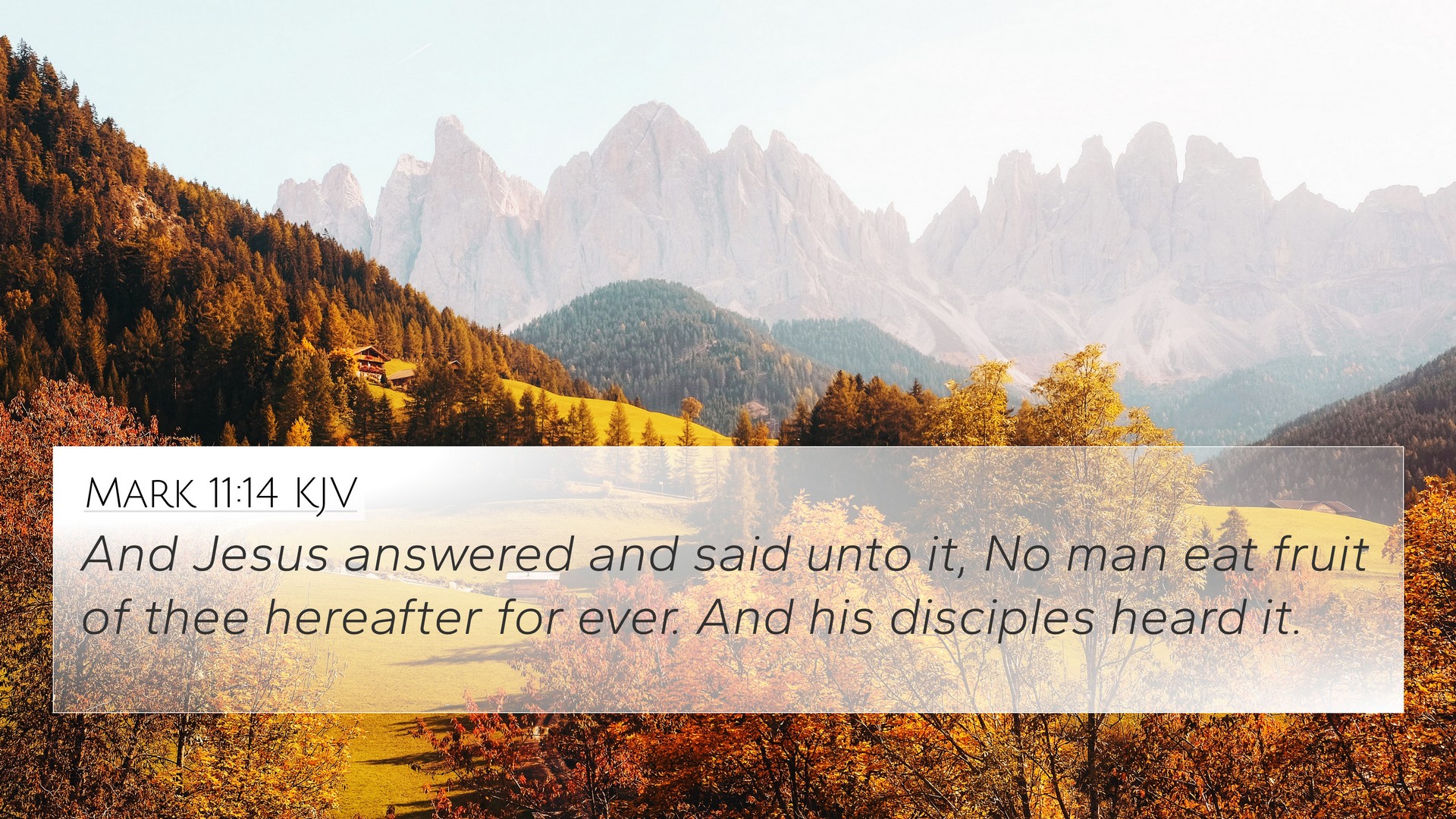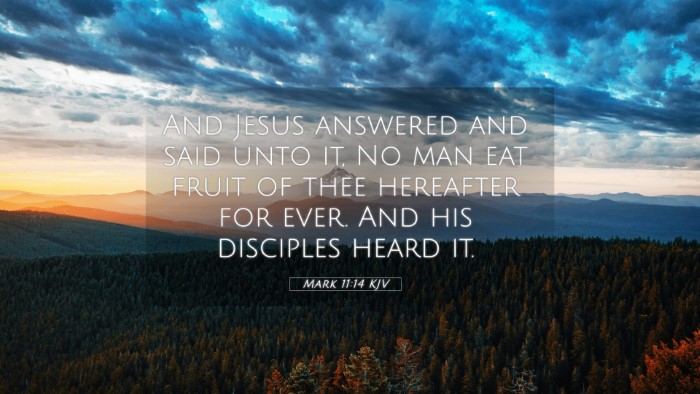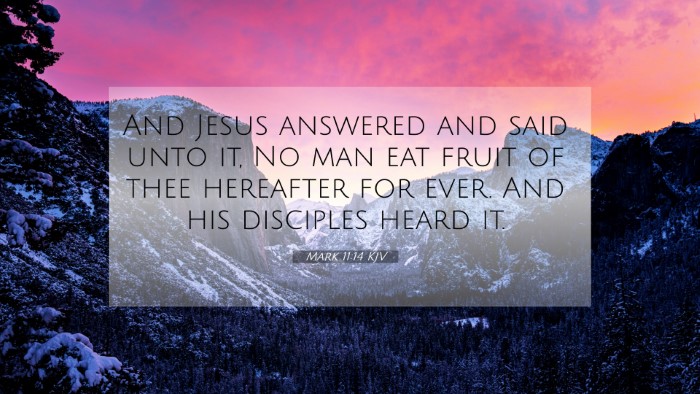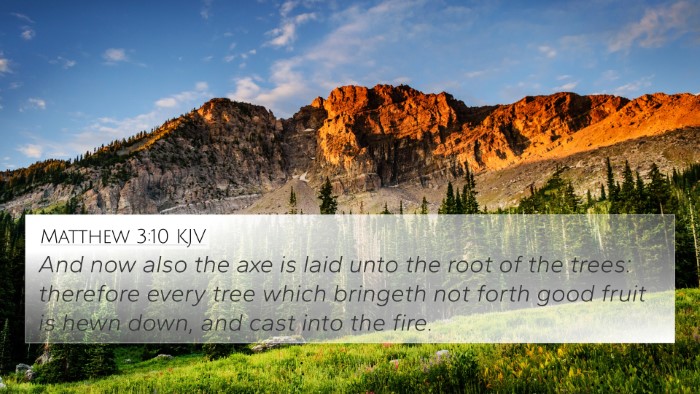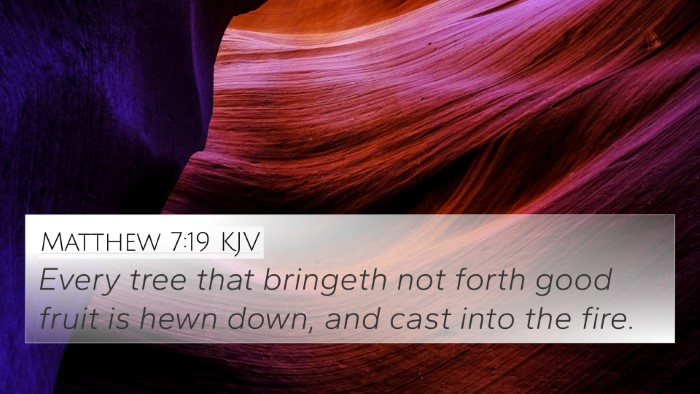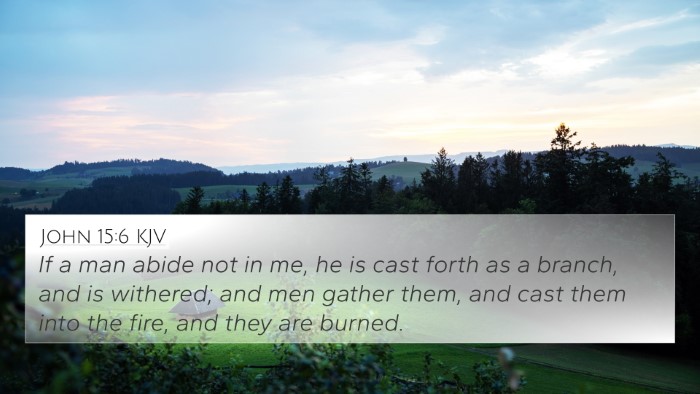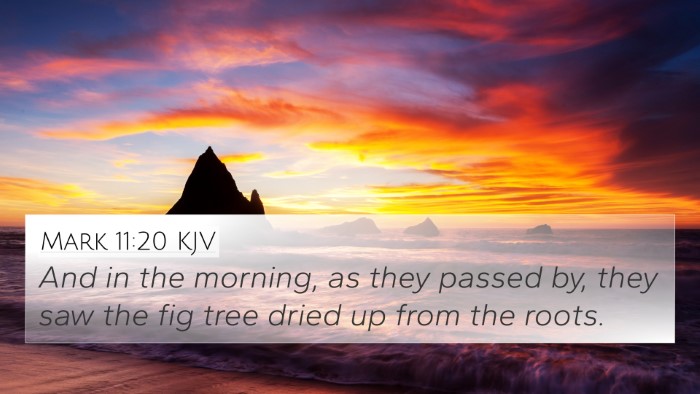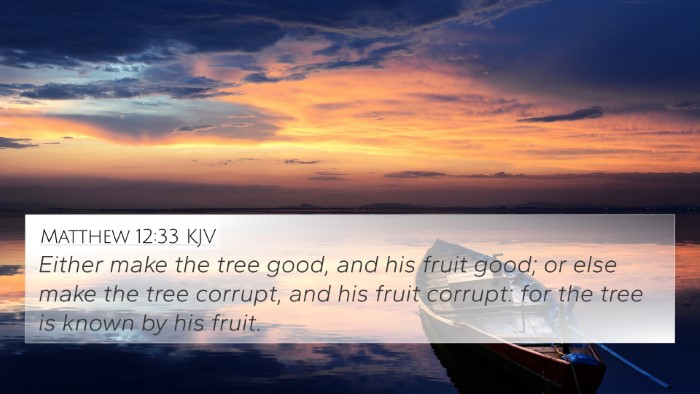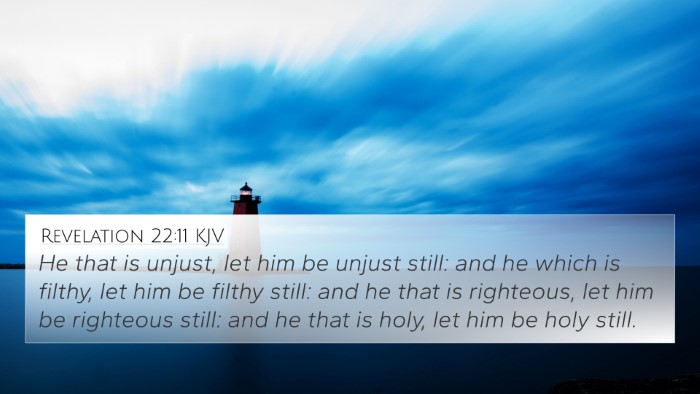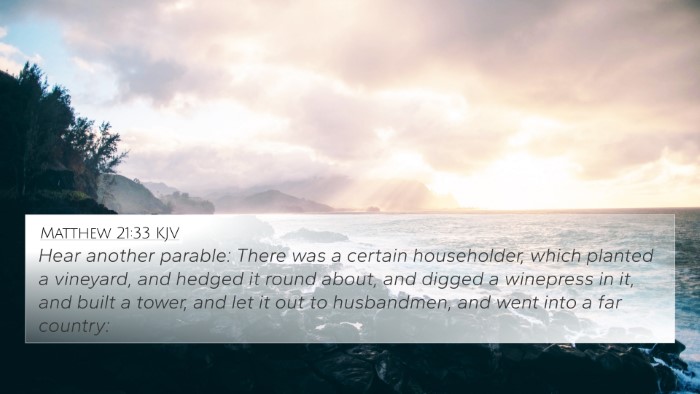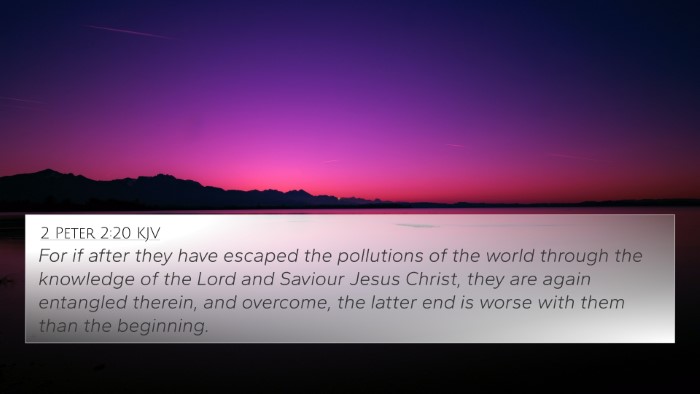Understanding Mark 11:14
Bible Verse: Mark 11:14 (KJV) - "And Jesus answered and said unto it, No man eat fruit of thee hereafter for ever. And his disciples heard it."
This verse captures a significant moment in Jesus' ministry, showcasing His authority over nature and setting the stage for deeper theological reflections. Below, we explore the insights drawn from prominent public domain commentaries, synthesizing their interpretations to provide a nuanced understanding of this scripture.
Contextual Overview
In the narrative of Mark 11, Jesus' cursing of the fig tree occurs after His triumphant entry into Jerusalem and before the cleansing of the temple. This juxtaposition illustrates the nature of Israel’s spiritual barrenness symbolized by the fig tree, which appeared fruitful but bore no actual fruit.
Commentary Insights
-
Matthew Henry's Commentary
Symbolism of the Fig Tree: Henry notes that the fig tree represents the Jewish people, outwardly pious yet spiritually barren. The cursing signifies a divine judgment on fruitlessness in faith and obedience.
-
Albert Barnes' Notes
Jesus' Authority: Barnes emphasizes Jesus' authority in commanding the fig tree. The event teaches the disciples about faith and the power inherent in speaking God's will into existence.
-
Adam Clarke's Commentary
Understanding the Miraculous: Clarke addresses the miraculous element of this act, hinting at the symbolism where the tree's lack of fruit can be understood in light of the unfruitfulness of Israel at the time.
Thematic Connections
The themes within Mark 11:14 intersect with several biblical narratives, urging believers to reflect on their spiritual fruitfulness. Here are related themes:
- Spiritual Barreness: The fig tree as a metaphor for unfulfilled spiritual potential.
- Judgment: God's judgment on those who profess faith without corresponding actions.
- Faith: The implications of speaking faith—the authority believers have in Christ.
Bible Cross-References
Mark 11:14 connects to various scriptures that reflect similar themes or actions of Jesus:
- Matthew 21:18-19: The parallel account of Jesus cursing the fig tree.
- Luke 13:6-9: The parable of the barren fig tree highlighting God's patience.
- John 15:2: "Every branch in Me that does not bear fruit He takes away."
- Isaiah 5:1-4: The song of the vineyard—Israel’s lack of fruits.
- Jeremiah 8:13: God lamenting over the lack of fruitful souls among His people.
- Matthew 7:19: "Every tree that does not bear good fruit is cut down."
- Romans 11:22: A call to consider the kindness and severity of God regarding fruitfulness.
Concluding Thoughts
Mark 11:14 serves as a powerful reminder of the importance of bearing good fruit in the life of a believer. By thoughtfully engaging with this verse and its commentary, one can appreciate the depth of its meaning and its call to spiritual vitality.
Exploring Cross-References
Through comprehensive Bible cross-referencing, believers can deepen their understanding of how different scriptures interact. Thematic Bible verse connections help reveal a cohesive narrative that runs throughout the Bible, offering insight into God's character and expectations for His people.
Resources for Bible Study
For those interested in diving deeper into the connections between Bible verses, here are some tools for Bible cross-referencing:
- Bible concordance
- Bible cross-reference guide
- Bible reference resources
- Bible chain references
Future Study Opportunities
This analysis provides a foundation, but a comparative study of Pauline epistles or inter-Biblical dialogue can further enrich one's understanding of fruitfulness in faith. Exploring how to find cross-references in the Bible can lead to powerful spiritual insights and a more informed faith journey.
